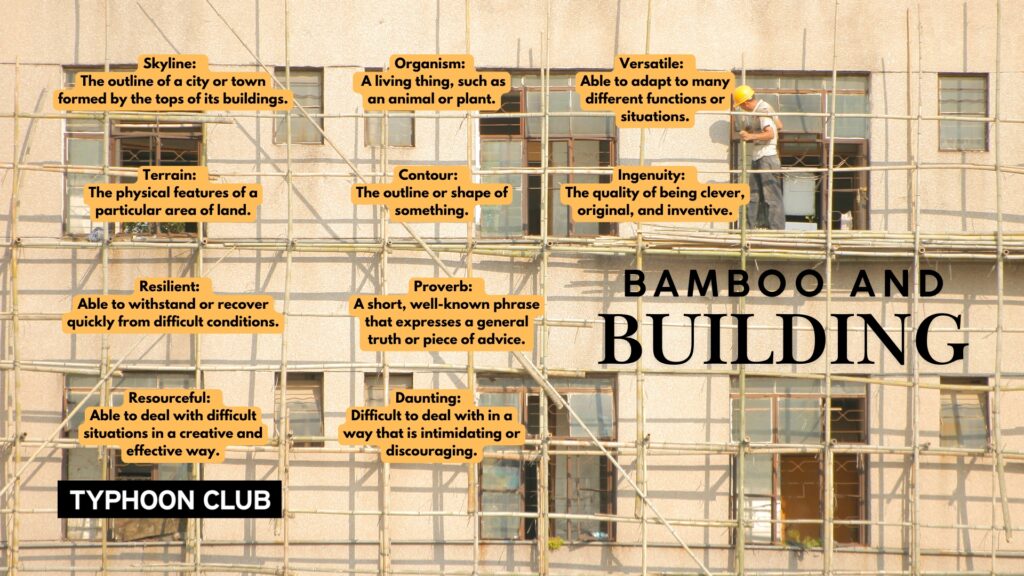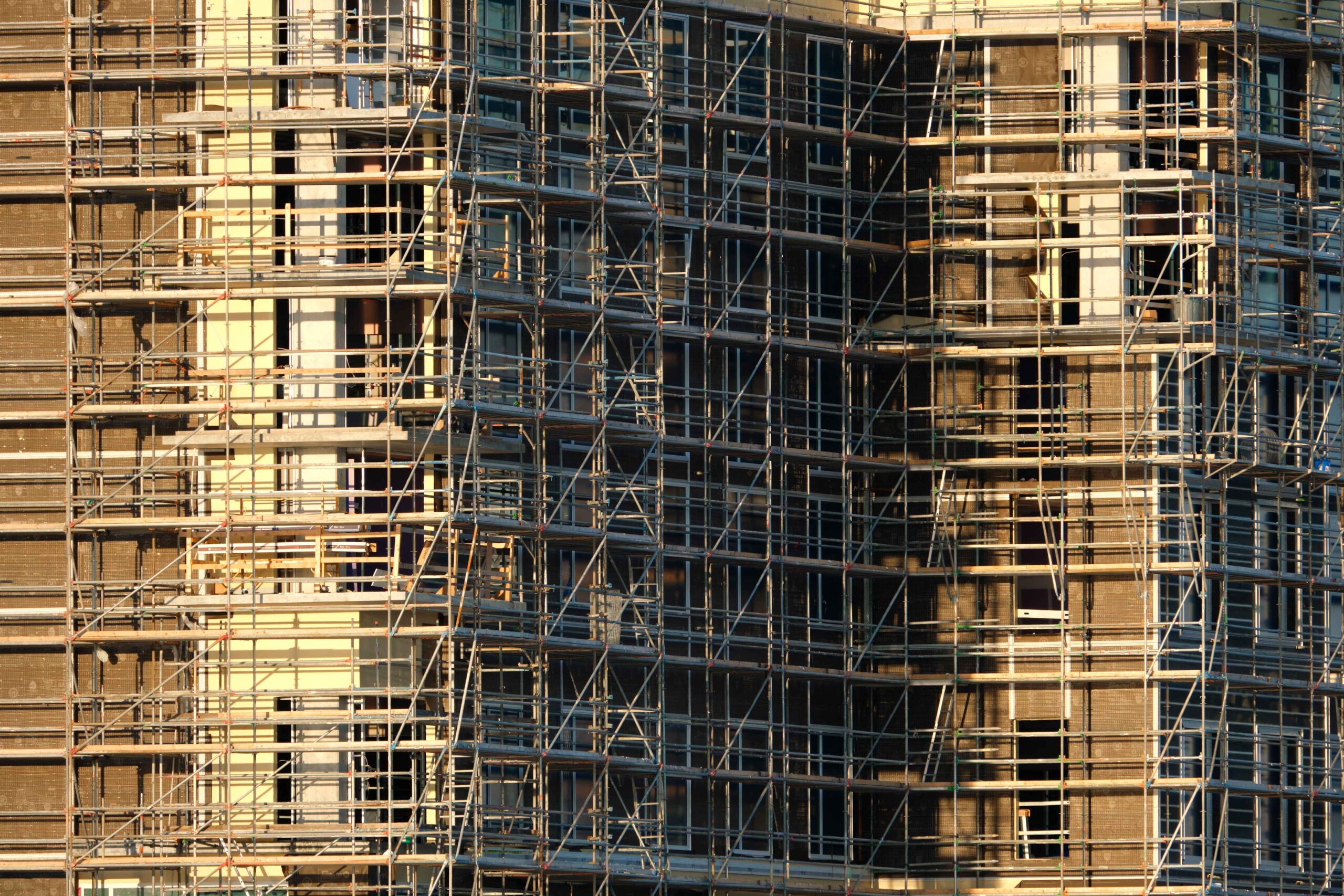
“The taller the bamboo grows, the lower it bends.”: Chinese Proverb
In the busy streets of Hong Kong, where skyscrapers pierce the sky and construction projects never end, one architectural marvel stands out: the use of bamboo scaffolding. This ancient practice, rooted in over 5,000 years of Chinese tradition, has played a key role in shaping the city’s iconic skyline.
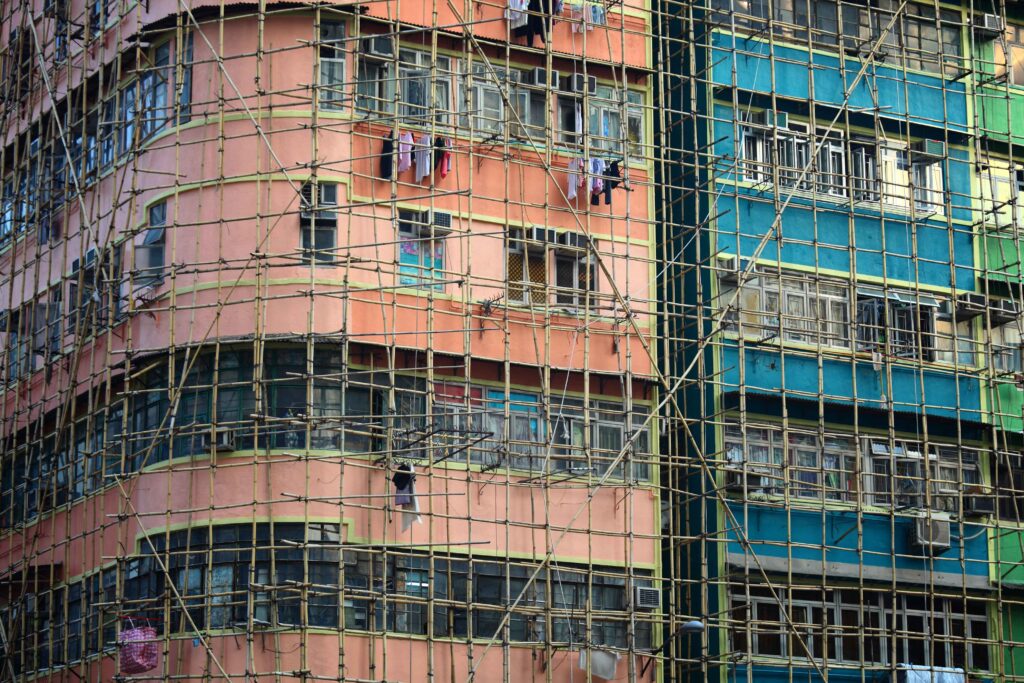
It is hard to imagine Hong Kong without its towering buildings, but the journey to this modern architectural landscape has been anything but straightforward. The steep, rocky terrain of the region posed significant challenges for early builders. However, they found a solution in the humble yet resilient bamboo plant.
Bamboo, a grass-like organism with over 1,200 species worldwide and 400 varieties in China alone, proved to be the perfect material for the task. Its rapid growth, light yet incredibly strong properties, and ability to bend without breaking made it an ideal choice for scaffolding.
The process of transforming raw bamboo into a functional scaffolding system is no easy feat. It takes three years of training to become a skilled bamboo scaffold builder, and another seven years to be considered an experienced professional, known as a “Sifu.” These experts meticulously select, cut, and dry the bamboo, ensuring it is of the highest quality before assembling the intricate structures.
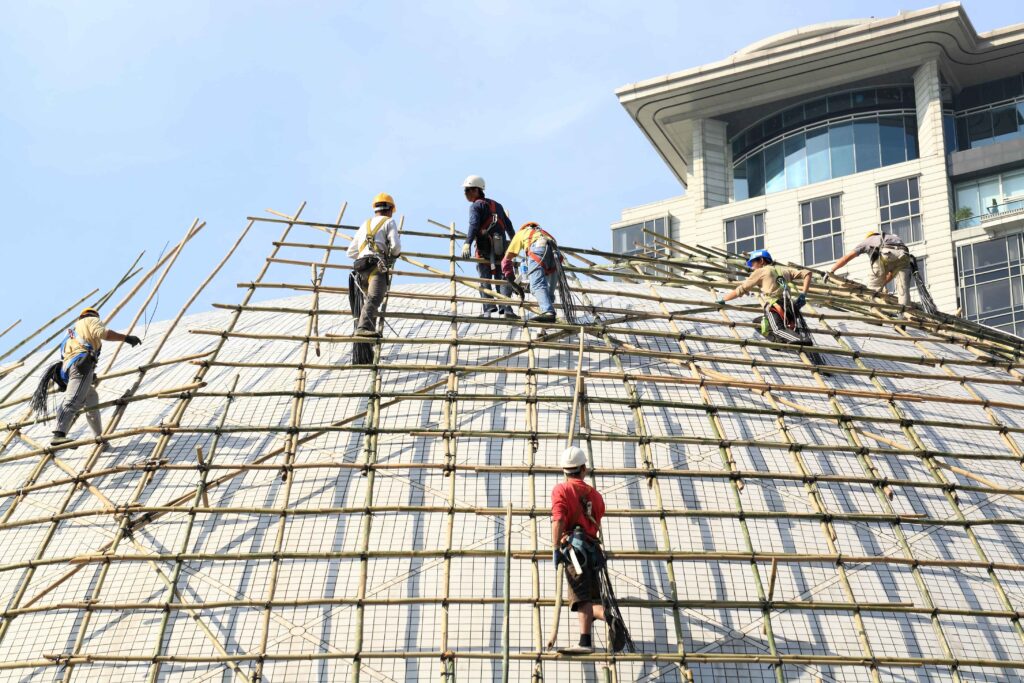
The advantages of bamboo scaffolding are numerous. Its lightweight nature allows for quick and efficient construction, and its flexibility enables the scaffold to conform to the unique shapes and contours of Hong Kong’s architectural designs. Furthermore, bamboo is significantly less expensive than traditional metal scaffolding, making it a cost-effective solution for builders.
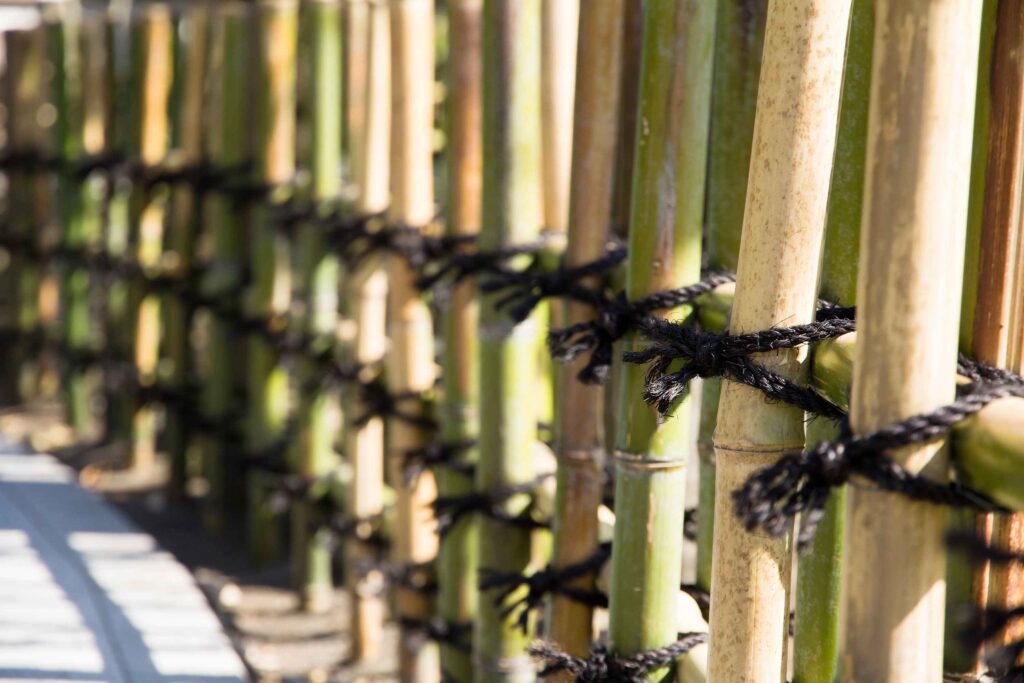
Perhaps the most impressive aspect of Hong Kong’s bamboo scaffolding is its resilience. These structures have withstood the test of time, including the region’s frequent typhoons and severe weather conditions. The proverb, “The taller the bamboo grows, the lower it bends,” perfectly encapsulates the adaptability and strength of this ancient building technique.
As Hong Kong continues to evolve, the use of bamboo scaffolding remains a testament to the ingenuity and resourcefulness of its people. This unique architectural practice not only contributes to the city’s distinct character but also serves as a reminder of the enduring power of traditional knowledge and the ability to overcome even the most daunting challenges.
Could you be a scaffolder in Hong Kong?
QUESTION:
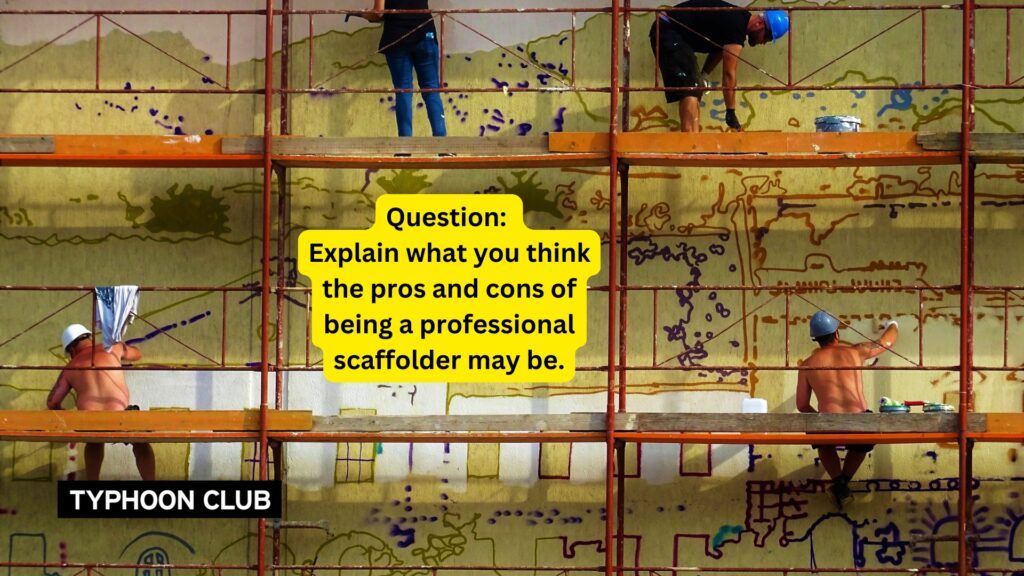
VOCABULARY:
